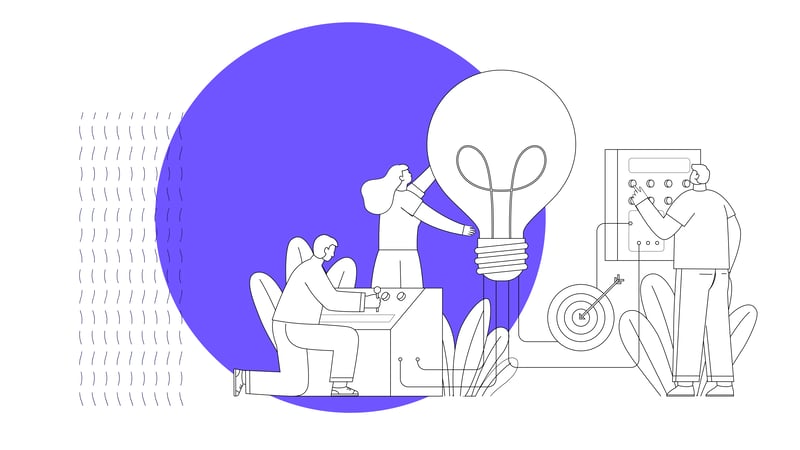Don’t get us wrong. No one at Turbine HQ is turning down a bonus - all of us could use a new pair of shoes. But, when it comes to incentive schemes, is money the only way to motivate employees?
In this blog, we take a deep look at human motivation and reveal some hard truths about employee incentive schemes to see which ones actually work.
Understanding motivation
To understand how best to introduce incentive schemes at work, first we must take a little time to look at the science of motivation.
We’re going to take a quick peep at the brain here, but don’t worry, the test at the end is optional.
In most cases, humans experience motivation when the neurotransmitter, dopamine, releases signals to the nucleus accumbens - the area of the brain that mediates reward behavior.
This prompts us to respond in ways that either minimise a predicted threat or maximise a predicted reward.
So, let’s say your manager asks for volunteers to lead a new project. Your nucleus accumbens activates, weighs up your options, and casts a prediction. Your actions will be motivated by this prediction, either the probability of reward or the fear of punishment (a world of compliments and pay rises, or scorn and cleaning out the company ferret for a month).
In short: humans are motivated by the promise of reward or the fear of punishment. As a result, you’ll likely offer to lead the project to gain a pay rise and avoid sitting on the naughty step.
Reward incentive schemes
Many businesses take advantage of this basic reward / punishment instinct with incentive schemes. Here are a couple of ways to introduce these into your company.
1. Pay for performance
Research shows that companies using pay-for-performance systems actually achieve higher productivity, profits, and customer service.
However, this tactic has been criticised for creating risk-averse environments that diminishes creativity.
2. The validation station
Companies like Google motivate their staff with a 'Kudos Wall’. With this practice, people offer each other tokens of appreciation, either by posting them in a box or putting them on a wall.
This type of validation prompts that sweet dopamine hit, all while promoting a culture of gratitude.
However, the science of motivation is not always as simple.
Being the strange, complex beings that we are, humans have surpassed the simplicity of the reward / punishment mentality, and some researchers feel that dangling this proverbial carrot encourages rapacious behaviour. Some researchers even blame the US housing crisis on irresponsible pay for performance incentive schemes.
Tapping into intrinsic motivation
Research has found that, when it comes to motivating people, there is something far deeper to tap into. Intrinsic motivation.
"Intrinsic motivation is the tendency to seek out novelty and challenges, to extend and exercise one’s capacity, to explore, and to learn."
– Behavioural scientist, David González-Cutre et al
Intrinsic motivation drives people to experience satisfaction internally. It is self-applied and cannot be forced by external pressures. Intrinsic motivation can be found:
-
In the learning process: People are intrinsically driven to work in the pursuit of knowledge.
-
Throughout creative work: People work hard to create something they deem beautiful or important.
-
In cooperation: The need to help someone else achieve something can manifest as intrinsic motivation.
-
When fulfilling a higher purpose: When people are motivated to fulfill a purpose greater than themselves, they are intrinsically motivated.
Intrinsically-motivated incentive schemes
Recent McKinsey data shows that employees who are intrinsically motivated are 32 percent more committed to their job, have 46 percent higher job satisfaction, and perform 16 percent better than other employees.
Sounds like we’re onto a winner. But, how do we use intrinsic motivation to incentivise employees?
1. Create a fantastic working culture
Invest time into helping your staff build working relationships. Having friends at work improves productivity, and employees are more motivated when working for the good of their team. Try organising social events or team building activities.
2. Give back
As we’ve mentioned, people are intrinsically motivated by fulfilling a higher purpose. Consider partnering with a local charity (chosen by your employees) to donate a percentage of your profits to.
3. Introduce learning opportunities
Tap into your employee’s desire to learn by offering opportunities to take on new skills.
The best of both worlds
While plenty of behavioural scientists agree that intrinsic motivation is the one true path to incentivised workers, the hard fact is: you cannot eat fulfilment.
Steadily-increasing and equal pay is an obvious necessity for motivating your employees. Just try to replace your team’s pay cheques with team building activities and see how many turn up for work tomorrow.
Instead, accept the vital (yet limited) value of reward incentive schemes while also finding ways to promote intrinsic motivation at work. Offer public validation while also investing in learning opportunities. Help to build working relationships while making sure your employee’s pay reflects their efforts.
After all, the best bosses don’t just focus on what their employees need to survive, but what they need to thrive.





